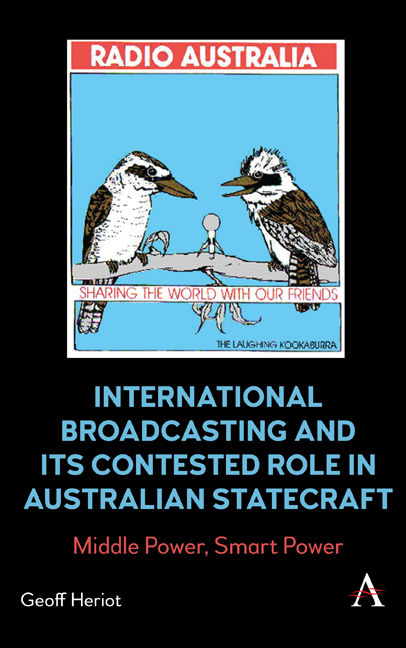 International Broadcasting and Its Contested Role in Australian Statecraft
International Broadcasting and Its Contested Role in Australian Statecraft Book contents
- Frontmatter
- Dedication
- Contents
- List of Figures
- Foreword
- Acknowledgements
- Chapter One Introduction
- Chapter Two Media and the Contest of Ideas
- Chapter Three International Broadcasting and Its Discursive Properties
- Chapter Four Mobilising ‘Softer’ Power in a Hard World
- Chapter Five Australia’s ABC: State Interests, National Evolution
- Chapter Six Purpose, Performance and Evaluation
- Chapter Seven Modernising the ABC
- Chapter Eight Policy, Priorities and Qualified Independence
- Chapter Nine Engaging with Intercultural Audiences
- Chapter Ten Indonesia, the Crucible
- Chapter Eleven Strategic Contingency and War
- Chapter Twelve Looking to the New Disorder
- Index
Chapter Two - Media and the Contest of Ideas
Published online by Cambridge University Press: 15 November 2023
- Frontmatter
- Dedication
- Contents
- List of Figures
- Foreword
- Acknowledgements
- Chapter One Introduction
- Chapter Two Media and the Contest of Ideas
- Chapter Three International Broadcasting and Its Discursive Properties
- Chapter Four Mobilising ‘Softer’ Power in a Hard World
- Chapter Five Australia’s ABC: State Interests, National Evolution
- Chapter Six Purpose, Performance and Evaluation
- Chapter Seven Modernising the ABC
- Chapter Eight Policy, Priorities and Qualified Independence
- Chapter Nine Engaging with Intercultural Audiences
- Chapter Ten Indonesia, the Crucible
- Chapter Eleven Strategic Contingency and War
- Chapter Twelve Looking to the New Disorder
- Index
Summary
To a hammer, every problem might look like a nail. But who wields the hammer, with what motivating interest and application of craft determines the finish. If international broadcasting is the tool, expectations of its utility and operating principles may strain against one another subject to the varying biases of party politics and ostensible national interest, hard power realpolitik, government-aligned diplomacy, commerce and journalism. Operationally, an international broadcaster occupies a grey zone between practices of overt propaganda and ‘persuasive communication associated with “soft power”’ (Wright, Scott & Bunce 2020, p. 2). So an evaluation of the Australian experience must be set in context of the wider relations of power in which media are situated (Curran 2003, p. 222; Iyengar 1994). This chapter therefore serves as a cross-disciplinary bridging device and conceptual foundation for reappraising international broadcasting in statecraft.
Media and the Creation of ‘Virtual Space’
Those ‘who do not have a presence in the media do not exist in the public mind’, writes Manuel Castells (2013, p. 194). Political actors needing to accomplish things that require public visibility will always turn to the media (Dahlgren 2009, p. 35). Globally, the vast majority of foreign citizens learn about foreign affairs from news media (Golan, Manor & Arceneaux 2019, p. 3) rather than from other forms of outreach (Nye 1990). US studies found that international news coverage had a direct influence on public opinion (McNelly & Izcaray 1986; Salwen & Matera 1992; Semetko et al. 1992; Wanta & Hu 1993). They identified a general but not perfect correlation between the tone of media coverage and public perceptions – especially when the tone was negative. Other research reaffirms that the frequency with which news media cover particular issues can influence significantly what issues the audience perceives to be the most important within a society (Wanta & Alkazemi 2018). From Australia, the task of an international broadcaster communicating for influence involves the added complexity of reaching across unlike sociolinguistic, cultural and political realms in the Indo-Pacific.
An obvious precondition of influence is that the media organisation – the international broadcaster – must function as a ‘transmission belt’ of information resources (Ohnesorge 2019, p. 91). Reaching out from the broadcaster’s home jurisdiction to engage foreign publics and individuals, it must have the technical capacity and demonstrate the communicative values that attract audiences.
- Type
- Chapter
- Information
- International Broadcasting and Its Contested Role in Australian StatecraftMiddle Power, Smart Power, pp. 15 - 34Publisher: Anthem PressPrint publication year: 2023
